Stage 2 Biology - Exam Revision
1/151
Earn XP
Name | Mastery | Learn | Test | Matching | Spaced |
|---|
No study sessions yet.
152 Terms
Describe the role of RNA and ribozymes in the first simple cells
RNA stored genetic material.
Ribozymes acted like enzymes and catalysed reactions
Describe how the evidence of stromatolites suggests that prokaryotes existed before eukaryotes
Explain 2 pieces of endosymbiotic evidence which suggests that prokaryotes existed before eukaryotes
The double membrane of mitochondria and chloroplast suggests that these organelles were original prokaryote cells that were engulfed by a larger prokaryote cell in an endosymbiotic event. The inner membrane of the mitochondria and chloroplast resembles the original prokaryote cell and the outer membrane resembles the host cell.
Mitochondria and chloroplast both have ribosomes. This suggests that mitochondria and chloroplast were able to synthesis proteins and therefore were independently functioning cells.
Explain how the ancestry of eukaryotic cells involved endosymbiotic events
The theory of endosymbiosis suggests that mitochondria and chloroplast both were once prokaryote cells that were engulfed by a larger prokaryote, living in a symbiotic relationship.
Describe the technique of DNA-DNA hybridisation
A strand of DNA is taken from the different organisms and placed into a test tube. The test tube is heated up, separating the DNA strands. The test tubes are then cooled down, allowing the DNA strand to bind back together, forming a hybrid DNA strand. The test tube is then heated up again and the temperature of the melting point (50% separation) is measured. The greater the temperature the more closely related the organisms are.
Explain the sequencing of common proteins
A common protein that is shared between the two organisms is taken and the amino acid sequence from both organisms is identified. Differences of the amino acids in the polypeptide chain would determine differences in species because the amino acid chain is coded by a DNA sequence and differences of the amino acid would signify differences in the DNA sequences of the species. The number of amino acids that are different would allow to determine the species relatedness in which less differences means the species are more closely related.
Describe why cytochrome C is a suitable protein for common protein sequencing
Cytochrome C is a protein that is essential for aerobic respiration and the formation of ATP and therefore it is a common protein shared by all living organisms.
Describe why rRNA sequencing is better than DNA sequencing when investigating the evolution of bacteria
All bacteria have ribosomes and therefore rRNA
Describe DNA sequencing
Compares DNA sequences of different species to one another. The more similarities between the base sequences, the more closely related species are and more recently share a common ancestor. The more differences of base sequences, the less related the two species are.
State the rate at which mutation occur
Constant
State the definition of a species
A species is a group of organisms that share physical characteristics, can exchange genes and interbreed to produce fertile and viable offspring.
What criteria can be used to define a species
Organisms that have the capability of interbreeding to produce fertile and viable offspring
Describe the reproductive isolation mechanism of temporal isolation
Species remain isolated over time as their mating events occur at different times of the year.
Describe the reproductive isolation mechanism of behavioural isolation
Species are unable to mate due to differences in behaviour such as mating and courting processes.
Describe the reproductive isolation mechanism of mechanical isolation
Structural/chemical barriers that prevents fertilisation
Describe the reproductive isolation mechanism of gamete isolation
Sexual reproduction occurs but fertilisation does not occur as proteins on the surface of the egg prevents sperm from other species from fusing.
Describe the two post-zygotic reproductive isolation mechanism
Sterility is when two different species interbreed, however the offspring does not have sex cells and is incapable of sexual reproduction.
Inviability is when two different species interbreed, however the offspring can not develop properly and is therefore incapable of reaching maturity.
State why reproductive isolation is important
Reproductive isolation mechanisms act to keep distinct species.
State what a gene pool is
All genetic information within an interbreeding population
Explain the process of natural selection and how it causes a change in the frequency of alleles
Natural selection is the process of which selection pressures select for or against specific traits in a population. Individuals with the favoured allele/trait will survive longer because it is fitter and will therefore reach maturity and reproduce more often. Individuals with the favoured trait will pass that gene onto the next generation, which if continued over time will alter the allele frequency in the population.
Describe how speciation can result in two population that diverge from a common ancestor
Two populations of the same species would be isolated, restricting gene flow and therefore experiencing different selection pressures. The selection pressures would favour a specific allele/trait carried by individuals in that population. The favoured allele would allow for individuals with that trait to be fitter and therefore reproduce more. This would then be more likely to be passed onto the next generation, increasing the gene's allele frequency. This would continue over time until the gene is passed onto all individuals in the population. The populations will also accumulate different mutations. The evolution of this population will increase the genetic divergence between the species, to the point where the two populations are so genetically different, that if the populations were to interbreed they would not be able to produce a viable and fertile offspring.
Describe the process of allopatric speciation
Allopatric is genetic isolation due to a geographical barrier.
Describe the process of sympactic speciation
Sympatric is altered gene flow which results in gene being shared between a small isolated group due to a potential behavioural isolation restricting gene flow between the smaller and larger populations. Over time as the populations are not interbreeding, they may accumulate different mutations and due to their behavioural changes may have different favourable traits, over time resulting in the smaller population becoming so genetically different that the two populations are unable to interbreed to produce fertile and viable offspring.
Identify and give an example of convergent evolution
Two different species experiencing the same selection pressures leading them to develop similar characteristics or traits.
Identify divergent evolution
Two species developing from a common ancestor and becoming more distinct over time.
What are homologous structures and what type of evolution is it associated with
Homologous structures have similar structures, but different functions, evidence of divergent evolution
What are analogous structures and what type of evolution is it associated with
Homologous structures have different structures, but similar functions, evidence of covergent evolution
Explain primary succession
As the new land is formed, pioneer species may inhabit the land. These will alter the environment than making it more suitable for other new species. Eventually the new land will be turned into a sustainable ecosystem for living organisms.
Explain secondary succession
An area with original species is destroyed, leaving behind nutrient rich soil. Rapid reproducing and fast growing species inhabit the area first. The new species alters the environment to ensure it more favourable for other new species over time which further alters the environment. This results in a change of the mix species in this area from the previous mix.
Explain sources of genetic variation in a species that reproduces sexually
Random fertilisation: the combination of random genetic make-ups during sexual reproduction
Independent assortment: assortment of paternal and maternal chromosomes during meiosis.
Crossing over: homologous chromosomes are lined up and fragments from the maternal and paternal chromosomes are broken off and exchanged
Examples of species with low genetic diversity
Cheetahs, Sea otters, Narwhals
Explain how the founder effect could result in low genetic diversity
The founder effect is a small isolated population resulting in a decreased gene pool and therefore low genetic diversity.
Explain the term genetic drift and how it could result in a bottleneck event
Genetic drift are random changes in allele frequency in a population as a result of a frandom chance event, that may eliminate a specific allele(s), therefore shrinking the gene pool. This could result in a bottleneck event, in which the reduced population size as a result of the random event leads to low genetic diversity, therefore resulting in a population being more susceptible to selection pressures,
Explain the role of a neurotransmitter
A neurotransmitter is a chemcial release from the presynaptic neuron into the synapse via exocytosis. The neurotransmitter then binds to receptors on the postsynaptic neuron, sending an electrical impulse along the neuron, to transmit messages between neurons.
Where are motor neurons located
PNS
Where are inter neurons located
CNS
Where are sensory neurons located
PNS
Explain the stimulus response model
A stimulus is detected from either the internal or external environment. The stimuli is detected by sensory receptors which then signals to a sensory neuron. The sensory neuron then transmits the message to an inter neuron and then the inter neuron to the motor neuron. The motor neuron then signals an effector, triggering a response.
Describe the role of synapses
Synapses is a gap between neurons that allows for neurotransmitters to be transported between neurons
Describe negative feedback
Negative feedback is when an initial stimulus is reduced or inhibited by a response.
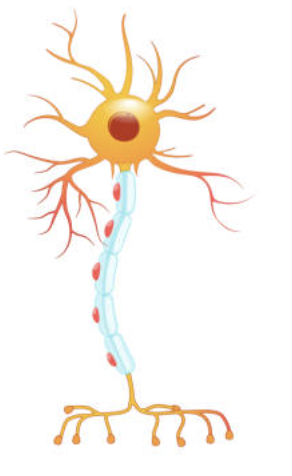
State the type of neuron and its role
This is a motor neuron and it transmits messages from the CNS to the effector
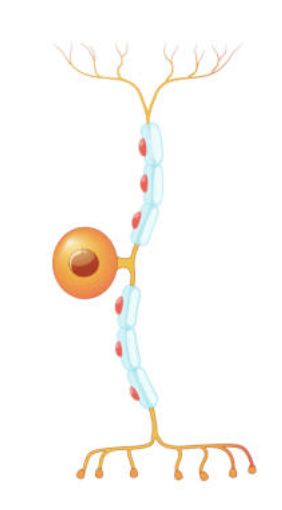
State the type of neuron
This is a sensory neuron and it transmits information from a receptor to the CNS
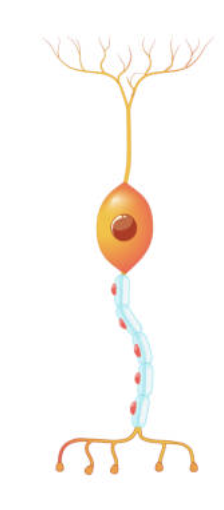
State the type of neuron
This is an inter neuron, it is located in the CNS and transmits information from sensory neurons to motor neurons
State the role of sensory receptors
Sensory receptors detect stimuli
State the role of effectors
Causes a response to the stimulus
Explain the effect of an increase of insulin has on the body
Insulin is released by the pancreas and binds to cells in the liver, triggering the uptake of glucose from the bloodstream and storing it as glycogen which results in an decrease of blood glucose.
Explain the effect of an increase of glucagon on the body
Glucagon is released by the pancreas and binds to cells in the liver triggering the breakdown of glycogen into glucose therefore raising glucose levels.
Explain the effect of ADH on the kidneys and osmoregulation
ADH binds to cells in the nephron, triggering an increase of aquaporins on the cells in the collecting tubule. This increases the reabsorption of H2O back into the blood stream, lowering blood osmolarity. An increase of ADH causes high urine osmolarity because H2O is transported from urine to the blood stream.
Describe the role of adrenaline in the context of the ‘fight or flight’ response
The hypothalamus detects stress and then sends an electrical impulse to the adrenal gland. The adrenal gland then releases adrenaline into the bloodstream, resulting in physiological changes that prepare the body for the 'fight or flight' response. Adrenaline increases heart rate, dilates pupils, dilates airways and increases respiration rate. These changes increases oxygen availability around the body and increases alternates.
State the stimulus and reflex response model
Sensory receptor, sensory neuron, inter neuron, motor neuron, effector, response
State the difference between the reflex response and stimulus response models
In the reflex response the electrical impulse is sent to the spinal cord, in a stimulus response the electrical impulse is sent to the spinal cord and travels up to the brain for processing
Explain the response to high blood osmolarity
Low blood H2O is detected in the hypothalamus, which releases ADH into the bloodstream. ADH binds to cells in the nephron, triggering an increase of aquaporins on the cells of the collecting tubule. This increases the reabsorption of water back into the bloodstream, lowing blood osmolarity.
Explain the response to low osmolarity
High blood H2O is detected by the hypothalamus which decreases ADH. This results in less ADH binding to cells on the nephron and therefore less aquaporins are present ont the cells of the collecting tubule. This decreases reabsorption of water back into the blood stream
Explain the body’s response to high blood glucose levels
High glucose levels are detected by cells in the pancreas. Beta cells in the pancreas then release insulin into the bloodstream. Insulin bonds to cells in the liver which increases the uptake of glucose from the bloodstream and stores it as glucagon, reducing blood glucose levels.
Explain the body’s response to low bloods glucose levels
Low blood glucose is detected by cells in the pancreas. Alpha cells in the pancreas then release glucagon into the bloodstream and stores stream. Glucagon then binds to cells in the liver, breaking down glycogen into glucose so that it can be released into the bloodstream. This increases blood glucose levels.
Explain the the endocrine response to high body temperature
High body temperature is detected by thermoreceptors in the hypothalamus. The hypothalamus then sends a messages to the pituitary gland which decreases TSH secretion. Therefore the thyroid is stimulated less, resulting in less thyroxine released. This decreases metabolic rate, leading to a decreased rate of respiration and therefore less heat energy is released, causing a decrease in body temperature.
Explain the endocrine response to low body temperature
Low body temperature is detected by thermoreceptors in the hypothalamus. The hypothalamus then sends an electrical impulse to the pituitary gland, which releases TSH. TSH stimulates the activation of the thyroid which releases thyroxine into the bloodstream. Thyroxine targets cells in the body, speeding up the metabolic rate and as a result generates more heat energy, increasing body temperature.
Explain 2 nervous responses to high body temperature
High body temperature is detected by thermoreceptors in the hypothalamus. The hypothalamus sends an electrical impulse to the sweat glands, causing to secrete sweat, which would evaporate of the skin, providing a cooling effect and resulting in heat loss.
The hypothalamus sends an electrical impulse is sent to the capillaries, causing them to dilate, increasing blood flow and the distance between the blood vessel and skin, losing heat more readily.
Explain 2 nervous responses to low body temperature
Low body temperature is detected by thermoreceptors in the hypothalamus. The hypothalamus then sends an electrical impulse to the muscle fibres, which causes them to contract and relax rapidly, generating heat and increasing body temperature.
Low body temperature is detected by thermoreceptors in the hypothalamus. The hypothalamus then sends an electrical impulse to the blood vessels causing them to constrict, preventing heat loss and retaining body heat.
Explain the body’s response to high CO2
CO2 builds up in the blood. CO2 them crosses the blood brain barrier and reacts with water to form carbonic acid (H2CO3). The carbonic acid then breaks downs into hydrogen carbonate (HVO3) and hhydrogen ions (H+). The hydrogen ions are then detected by chemoreceptors in the medulla oblongata, indicating a high pH level. A nerve impulse is then sent to respiratory organs to increase breathing rate, resulting in an increased and more expelling CO2, increasing blood pH.
steroid vs non-steroid communication
Steroid hormones are lipid soluble and can therefore pass through a cell membrane and bind to receptors inside a cell. Non-steroid hormones are not lipid soluble and therefore binds to receptors on the membrane.
Compare charateristics of the action of the nervous and endocrine system.
Provide 3 pieces of evidence for endosymbiosis
+ Chloroplasts have a double membrane. The inner membrane was the original, prokaryotic membrane and the outer membrane is eukaryotic like, evident of the engulfing event
+ Chloroplasts replicate by binary fission, like prokaryotes
+ Chloroplasts contain their own circular DNA chromosomes like prokaryotes
+ Chloroplasts have their own ribosomes which are prokaryotic like
Explain why the cell membrane can be described as ‘fluid-mosiac’
The cell membrane consists of a semi-permeable bilayer of phospholipids, composed of a hydrophilic head and hydrophobic tail, embedded proteins and cholesterol. The arrangement of these components is described as a mosaic. The term fluid is used to describe the cell membrane as the components are constantly moving laterally and fluid.
Compare the internal organisation of prokaryotes and eukaryotes
Eukaryotes have a nucleus, prokaryotes do not
Eukaryotes have membrane bound organelles
Compare the shape and location of chromosomes in a prokaryote and eukaryote
Chromosomes within a prokaryote are circular and are located in the nucleoid
Chromosomes within eukaryotes are linear and are located in the nucleus
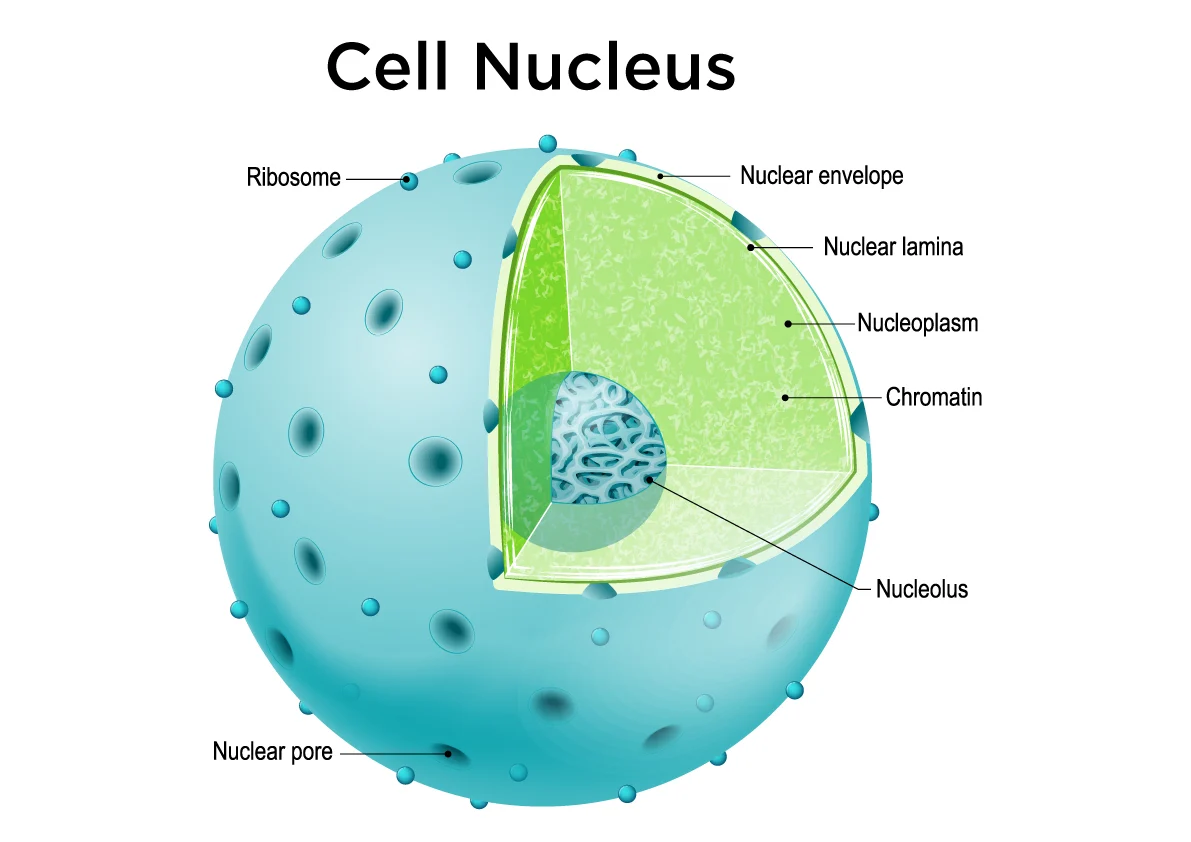
Identify and explain the function of this organelle:
The organelle is a nucleus. The nucleus regulates cell activities, stores genetic material, the site of DNA replication and translation
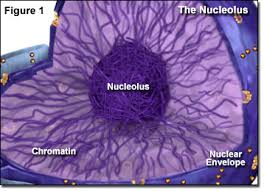
Identify and explain the function of this organelle:
This organelle is a nucleolus. The nucleolus produces and assembles the cell's ribosomes and synthesises rRNA

Identify and explain the function of this organelle:
This organelle is a mitochondrion. Mitochondria are the site of aerobic respiration
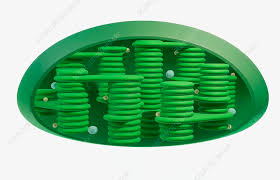
Identify and explain the function of this organelle:
This organelle is a chloroplast. Chloroplast is the site of photosynthesis
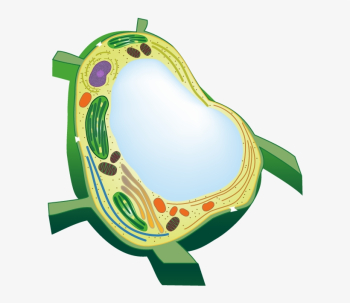
Identify and explain the function of this organelle:
This organelle is a vacuole. Plant cells have 1 large vacuole that stores water and helps maintain the structure of the cell. Animal cells have many smaller vacuoles that store nutrients
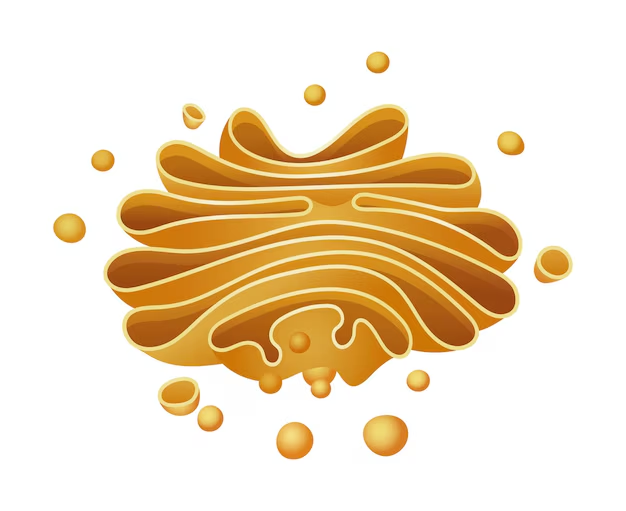
Identify and explain the function of this organelle:
This organelle is the golgi body. The golgi body packages and processes vesicles containing proteins and lipids before they're transported
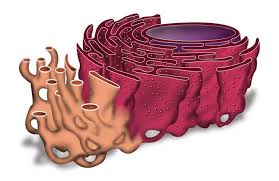
Identify and explain the function of these organelles:
These organelles are the smooth and rough endoplasmic reticulum. The smooth ER synthesises lipids. The rough ER has ribosomes attached that synthesise proteins

Identify and explain the function of this organelle:
This organelle is a ribosome. Ribosomes are the site of translation and protein synthesis
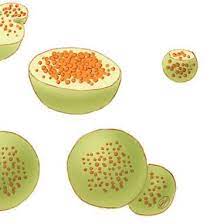
Identify and explain the function of this organelle:
This organelle is a lysosome. A lysosome is a membrane bound vesicle containing digestive enzymes that breaks down materials and foreign bodies
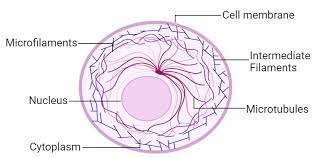
Identify and explain the function of this organelle:
This organelle is the cytoskeleton. The cytoskeleton aids in the movement of organelles and cellular membrane, the assembly of spindle fibres in mitosis and, in animal cells, provides support to the cell's shape
Distinguish between autotrophs and heterotrophs
Autotrophs produce their own energy by converting light energy into chemical energy.
Heterotrophs gain energy by consuming other organisms.
What is the chemical equation of photosynthesis
6CO2 + 6H2O → C6H12O6 + 6O2
What is the chemical equation of aerobic respiration
C6H12O6 + 6O2 → 6CO2 + 6H2O
What is the chemical equation of fermentation/ anaerobic respiration in animal cells:
C6H12O6 —> 2C3H6O3
What is the chemical equation of fermentation/ anaerobic respiration in plant and yeast cells
C6H12O6 → 2C2H5OH + 2CO2
What cell type does photosynthesis occur in
Plant / Autotrophs
State where photosynthesis is located
Chloroplast
Explain why the internal membrane of chloroplast facilitates photosynthesis
The internal membranes of the chloroplast facilitate photosynthesis as they are folded to produce thylakoids (stacked into geranium). This folding increases the surface area in which the chlorophyll pigments are located. Therefore, increasing the amount of trapped light which is needed for photosynthesis.
Describe the 2 parts of aerobic respiration
The glucose is broken down in the process of glycolysis in cytoplasm. This creates 2 pyruvate. Because is O2 present the 2 pyruvate is transported into the mitochondria and is further completely combusted.
State the product of anaerobic respiration/ fermentation in animal cells
Lactic acid
State the product of anaerobic respiration/ fermentation in plant and yeast cells
Ethanol and carbon dioxide
Explain why aerobic respiration produces more energy than anaerobic respiration
Aerobic in a complete combustion of glucose as the glucose is broken down into 2 pyruvate. The presence of oxygen allows the 2 pyruvate to be further broken down inside mitochondria, releasing more energy.
Anaerobic is incomplete combustion as after glycolysis O2 is not present and therefore the Kerbs cycle in the mitochondria can not occur. The pyruvate is then turned into lactic acid or ethanol and carbon dioxide.
Explain the ATP/ADP cycle
ATP is a molecule with stored energy between the second and third phosphate. If a cell requires energy the bond between the second and third phosphate in ATP is broken which releases energy and forms ADP + Pi. Energy released from aerobic and anaerobic respiration can then be used to synthesise ATP by rebinding an inorganic phosphate to ADP.
Describe the process of diffusion
Diffusion is a process of passive transport in which small and uncharged molecules, moving with the concentration gradient pass through the semi-permeable cell membrane
Describe the process of facilitated diffusion
Facilitated diffusion is a process of passive transport in which the movement of small uncharged particles, moving with the concentration gradient pass through channel proteins embedded within the cell membrane
Describe the process of osmosis
Osmosis if the diffusion of water particles, in which water molecules are transported across the cell membrane from a hypotonic solution (low solute) to a hypertonic solution(high solute concentration) facilitated by proteins call aquaporins.
Describe active transport
A process of transport in which energy is required to move large or charged molecules or molecules moving against the concentration gradient across the cell membrane through carrier proteins.
How does the internal membrane of the mitochondria facilitates aerobic respiration
The internal membrane of mitochondria facilitate the process of aerobic respiration as the folding of the internal membrane increases the surface area, allowing for more enzymes involved in aerobic respiration to be packed into the mitochondria, resulting in a higher rate of ATP synthesis.
Explain the process of endocytosis
Endocytosis is the process in which materials are transported into a cell During exocytosis a vesicle from extracellular space attaches to the cell membrane and creates an opening within the cell membrane and expelling the contents into the cell The vesicle then fuses with the cell membrane.
Explain the process of exocytosis
Exocytosis is the process in which cells export materials out of the cell. During exocytosis a vesicle packaged via the Golgi body is moved to the cell membrane via the cytoskeleton. The vesicle then fuses with the cell membrane and expels the contents out of the cell as the vesicle attaches to the cell membrane.
Why is DNA replicated before cell division
DNA is replicated before cell division to ensure that both daughter cells have the same amount of DNA and are genetically identical.
Explain the steps of binary fission
Binary fission occurs in prokaryote cells. In binary fission DNA are first replicated. The chromosomes then attach to the cell membrane and the cell elongates, separating the chromosomes. The cell wall and cell membrane begin to form. The cell then divides into two genetically identical daughter cells.
Describe the difference between sexual and asexual reproduction
Sexual reproduction is when a cell requires fertilisation before reproducing. Asexual reproduction does not have fertilisation
State and explain 2 events of genetic variation in meiosis
Crossing over and independent assortment are events in round one of meiosis that result in genetic variation. Crossing over occurs when homologous chromosomes are lined up and fragments from the maternal and paternal chromosomes are broken off and exchanged. Independent assortment describes the paternal and maternal chromosomes randomly line up of either side of the equator of the cell, resulting in the random assortment of genes.